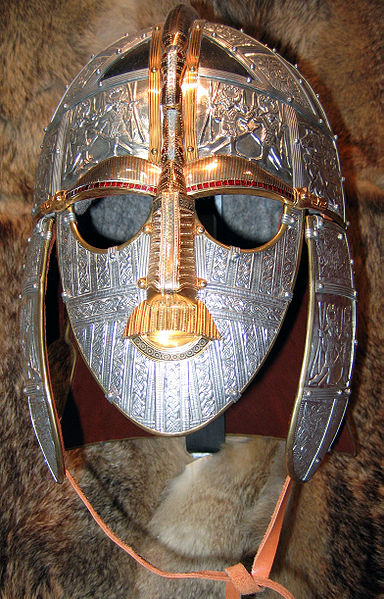The Battle of Strasbourg, also known as the Battle of Argentoratum, was fought in 357 between the Western Roman army under the Caesar Julian and the Alamanni tribal confederation led by the joint paramount King Chnodomar. The battle took place near Strasbourg, called Argentoratum in Ammianus Marcellinus' account, Argentorate in the Tabula Peutingeriana.
Portrait of a barbarian. Mosaic fragment from the Great Palace at Constantinople. 6th century
Aerial view of Colonia Agrippina (Cologne, Germany) in the Roman era. Note (bottom right) the Constantinian fortress of Divitia (Deutz), on the opposite bank of the Rhine. Its main function was to guard the approach to the newly built bridge (310) and to act as a base to protect traffic on the river. Several such cross-river forts were built along the Rhine-Danube frontier in the late period. Cologne was sacked and occupied by the Franks in 353 and recaptured by Julian in 356
View of Saverne (town on right) from a foothill of the Vosges mountains. The hill contains the ruins of fortifications from various eras, including the medieval Chateau de Geroldseck (right). The town, known as Tres Tabernae ("Three Inns") to the Romans, lay astride the main Roman highway through the Vosges from Alsace into Gaul. Strasbourg lies some 30km off the right edge of the picture
Reconstruction of the 7th-century parade helmet found in the Sutton Hoo Anglo-Saxon royal burial site. Based on a late Roman design known as a 'ridge-helmet', this type of helmet was commonly used by the Roman cavalry of the 4th to 6th centuries. This expensive, highly decorative version, designed for royalty, is likely similar to Chnodomar's "flashing helmet" described by Ammianus (XVI.12.24). Note the fake eyebrows, moustache and lips attached to the face-guard
In modern scholarship, the "late" period of the Roman army begins with the accession of the Emperor Diocletian in AD 284, and ends in 480 with the death of Julius Nepos, being roughly coterminous with the Dominate. During the period 395–476, the army of the Roman Empire's western half progressively disintegrated, while its counterpart in the East, known as the East Roman army remained largely intact in size and structure until the reign of Justinian I.
The Tetrarchs, a porphyry statue on Venice's Basilica di San Marco, shows the emperor Diocletian and his three imperial colleagues. To the left, Diocletian and Maximianus, the two Augusti (co-emperors); to the right, Galerius and Constantius Chlorus, the two Caesars (deputy emperors). Note the woollen "Pannonian" caps commonly worn (out of combat) by officers in the late army as a result of the pervasive influence of the Danubian officer class; and the sword grips with eagle-head pommels.

Reenactor wearing the typical equipment of a late 3rd-century foot soldier. The helmet is a Niederbieber type, with cross-pattern reinforcing ridges on the top of the bowl, and cheek-guards which can be fastened together. The sword is a spatha (median blade length 900 mm/36 inches), used by the cavalry only in the 1st and 2nd centuries. This soldier carries a spiculum, a heavy pilum-type javelin. Note the chain mail (lorica hamata) shirt and oval shield. Clothing consisted of a long-sleeved tunic, trousers and boots. The equipment of a 4th-century infantryman was very similar to the 3rd century, save that the
Fresco from the synagogue in the Roman fortified frontier city of Dura Europos dating to c. 250 AD. The centre shows unarmoured light cavalry charging with lances, the foreground and background show infantry fighting with spathae (long-bladed swords); they are equipped with knee-length scale armours, some with full-length sleeves.
Roman emperor Valerian (left, kneeling) begs for his life after being captured by Persian Shah Shapur I (mounted) at the Battle of Edessa (260), the most humiliating of the military disasters suffered by the empire in the late 3rd century. Rock relief at Naqsh-e Rostam near Shiraz, Iran








